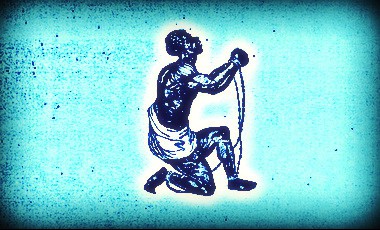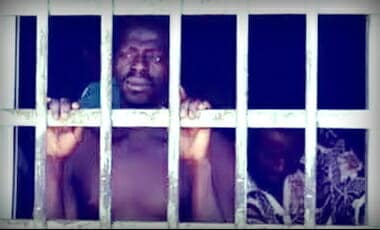Some amazing discussion about the beginnings of slavery, as well as more information on indentured servitude and the first legal slave owner:
“Slavery’s Ironic Twist of Fate,” By Roger D. McGrath
…Instrumental in establishing slavery in Virginia was an African slave, later known as Anthony Johnson, who was sold in Jamestown as an indentured servant in 1621 to a tobacco farmer with the surname of Bennet. By that time, tobacco had become the highly profitable cash crop of the colony and tobacco farms had begun filling up the hinterland of Jamestown. Johnson was one of the few on the Bennet farm who survived the Massacre of 1622, a surprise Indian attack on the farms surrounding Jamestown that left 347 colonists dead and mutilated. Johnson’s luck held, because the next year the Bennet farm had its first female indentured servant, an African called Mary, whom he married.
By the 1630s, Johnson was free of his indenture and, as was customary, received 50 acres of farmland from the colonial government. Soon he was selling crops of tobacco and importing indentured servants himself. For every servant he brought to Virginia he received 50 acres of land. By 1651, Johnson farmed 250 acres of land and had five indentured servants, four of them white and one black, a man named John Casor.
Claiming Johnson had kept him in servitude long beyond any term of indenture, Casor went to work for a neighboring farmer, Robert Parker. With Parker championing Casor’s cause the dispute went into the courts in 1654. Johnson argued that Casor had been sold in Africa as a slave and Johnson had bought him without Casor having signed a contract of indenture. Therefore, said Johnson, Casor was simply his property.
At first, the court rejected Johnson’s precedent-setting argument but, after an appeal in 1655 declared in Johnson’s favor, Casor was Johnson’s property and would remain so until Johnson sold him or freed him. There had been an indentured servant in Virginia sentenced to lifetime servitude as a punishment for a crime in 1641, but it was the Casor case that formally established the legal precedent for slavery. It is one of the ironies of history that a black African, Anthony Johnson, could be called the Father of American Slavery.
In 1661, the Virginia House of Burgesses, recognizing the Casor decision, enacted a statute that said any free person—white, black, or Indian—could own servants for life. This didn’t mean much to Indians who had practiced slavery for centuries anyway, but it did mean that the Indian tribes of the southeast would eventually own thousands of black slaves…..

